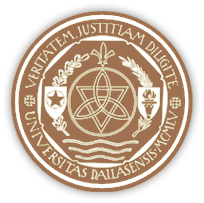*CMS = Chicago Manual of Style, 16th edition
- Listen to how your writing sounds: write with your ear, not just your reason.
-
Avoid self-reference, which includes references to the paper and to 'us' or 'we' as readers of the paper (for example, 'this paper will…'; 'I will show that…'; 'first I will consider…'; 'before looking at x we ought to consider y'; 'in order to understand x we need to look at y'). Instead simply state your arguments. To preview the organization, say something about the subject directly, rather than saying what you will say: rather than saying, 'first we will consider…,' just start considering it. Our readers are smart; you won't lose them.
The use of the first person plural pronoun is appropriate, however, if it refers to human beings in general, for example, 'we need images of the noble'; or to readers of a text you're discussing (rather than referring repeatedly to 'readers'), for example, 'the suffering of Gloucester moves us to pity.' (Notice that 'we' becomes equivocal if it is used both in these senses and to refer to readers of your own paper.) - Use transitional and linking words—most notably subordinate conjunctions and conjunctive adverbs—between sentences to show development explicitly, rather than presuming on readers to provide the logical connections between thoughts. See The Office of Assertion 3.14.
- But, avoid clumsy transition sentences between sections, which do nothing to advance the argument: not '…So she inexorably goes to her death. ¶ That completes the account of the heroine. It remains to discuss the hero.…'; but '…So she inexorably goes to her death. ¶ The hero cannot face the reality of the heroine's absence because….' Jump right in, we'll follow you. (Just make sure you know where you're jumping.)
- Strictly adhere to the rules of parallelism, using the most economical expression possible. See Strunk and White II.19.
- Be attentive both to the literal and to the metaphorical senses of words in order to avoid mixed metaphors. To quote Dr. Maurer, 'In every English word there sleeps a concrete image, which is that word’s “exact meaning.” (For example, the word “image” itself—it means a waxen death-mask, worn by a Roman in a torchlit funeral procession! That’s that word’s “exact meaning.”) All good, dense, musical English is written by people who wake up these images that sleep in each word, and use words exactly. You should look up in a dictionary any word whose meaning you don’t know exactly.'
- On the one hand, avoid cumbersome expressions meant simply to create the impression of gender neutrality; but on the other hand, avoid the pervasive use of gender-biased language.
- Avoid unnecessary couching/padding expressions and wishy-washy qualifiers, like 'it would seem that…,' 'perhaps…,' etc., except for the rare case when it is really necessary. Make your case, make it strong, and don't pretend you're not saying what you're saying.
- Avoid excessively repetitious word use; but, in an effort to avoid repetition, neither mix up sentence constructions that should be parallel nor fall into 'elegant variation' of word choice (see Fowler). Instead, use pronouns or re-write the sentences so that excessive repetition is unnecessary.
- Put the verbal notion in the main verb; for example, avoid constructions of indirection like 'this fact serves to demonstrate…' or 'this fact provides a demonstration…': instead, 'this fact demonstrates…' And speaking of facts…
- Avoid superfluous words; for example, the verbal chaff of 'the fact that.' Usually one can say 'that' in place of 'the fact that.' Another alternative is to delete the whole phrase, in which case the clause introduced by 'that' would have to be rewritten as a gerundial phrase, for example 'The fact that he takes things so seriously' becomes 'His taking things so seriously.' Or one may re-write the sentence in some other way.
- Passive voice should never be used; or, rather, it should not be overused.
- To prevent ambiguity, make sure that 'this' used as a pronoun has a clear antecedent. Be especially careful when referring to a thought in a previous sentence: often in such cases, 'this' is better used as an adjective with a noun. In general avoid using 'this,' relative pronouns, or any other pronouns, with a vague or implied referent.
- Having worked so hard to avoid other mistakes, one's writing should not have any dangling participles. See CMS 5.112.
- Write with positives rather than negatives: instead of 'not x' or 'un-x,' use an antonym of x.
- Use 'that' with restrictive clauses, and 'which' with non-restrictive, usually preceded by a comma.
- Use the Oxford comma; that is, the comma before a coordinating conjunction in a list of three or more. For example, 'Homer, Vergil, and Dante.'
- Use of expletives, for example 'It is … that,' or 'There is/are … that,' should be minimized.
- Use 'due' only as an adjective modifying a substantive: an effect is due to a cause. In proper usage 'due to' is interchangeable with 'attributable to'. Do not use 'due to' as a phrasal preposition introducing adverbial elements, as in 'he sleeps badly due to anxiety': instead use 'owing to', 'because of', etc. See Follett, CMS 5.220.
- A comma is not normally used between the parts of a compound predicate. See CMS 6.28-29.
- Avoid split infinitives, except where the sentence would be more awkward without the split than with it (this rule is more rigorous than CMS 5.168). But see Fowler on even worse pitfalls to avoid when trying to correct a split infinitive.
- Whenever points are enumerated, this enumeration should be in the form: 'first, second, third,' etc.; not 'firstly, secondly,' etc.; nor 'first, secondly,' etc. Whenever a point is listed as 'second,' there should be a preceding 'first.' 'First,' 'then' is acceptable as well.
- Names and singular nouns ending with a sibilant form their possessive by adding an apostrophe and the letter s: for example, Aeschylus's play.. See CMS 7.15-21.
- All dates so specified should be AD & BC rather than CE & BCE.
- Ordinal numerals in eras should be spelled out; for example, 'the second millennium,' not 'the 2nd millennium' (CMS 8.77).
Documentation
- Basic system: footnotes and bibliography. See CMS 16.3 ff.
- First citation in short form. See CMS 16.3, 16.42.
- After the first citation to a primary text, subsequent cites to the same text can be made as parenthetical in-text citations where convenient, using author (or title/author—title if more than one work by the same author is cited) & page number. Author's name may be excluded from parenthetical citation if it is cited in (or obvious from) the text. See also CMS 11.72-73, 11.75-76, 11.79-84
- The first time an author or other person is referred to, give the full name, first and last; in subsequent references, use last name only. Exceptions are made for people known by a single name, for example Hegel; also, people known by initials should be referred to so, for example T. S. Eliot.
- To quote Dr Maurer again, 'never make “shadow-references,” only exact references. For example, “Controversy buzzes… Disputes begin… Everyone agrees…. Many scholars say…. Others claim…. Most scholars… This challenges what some modern scholars hold as set in stone”—etc. No one is interested in these mere ghosts. Whenever you feel tempted to make a ghost-reference—oh just skip it.'
Specific Source Citations
- St. Thomas Aquinas’s Summa theologiae
- The Summa theologiae of St. Thomas Aquinas is cited by part (I, I-II, II-II, III), question, and article. For example, ST II-II, q. 23, a. 3, ad 1 means, the second part (or half) of the second part, question twenty-three, article three, reply to the first objection. 'Obj.' refers to an objection within an article. To cite more than one article at a time, use the abbreviation 'arts' for articles, as in the following example: ST I, q. 13, parts 5-6.
- Note that the title of this work is sometimes spelled Summa theologica in older literature; this spelling should be avoided wherever possible. Use 'theologica' only if that is the form is used in the edition cited.
- Following CMS 17.51, Latin titles—except for works in English with Latin titles—are capitalized sentence style. Therefore 'theologiae' should not be capitalized.
- Sample Footnote: Aquinas, Summa theologiae III, q. 72, a. 11.
- Bibliography: Aquinas, Thomas. Summa theologica: Complete English Edition in Five Volumes. Vol. 4. Trans. Fathers of the English Dominican Province. Westminster, MD: Christian Classics, 1981.

